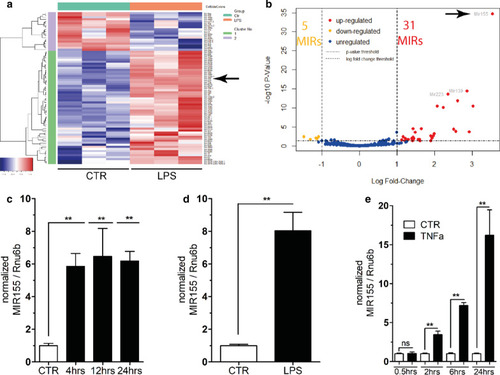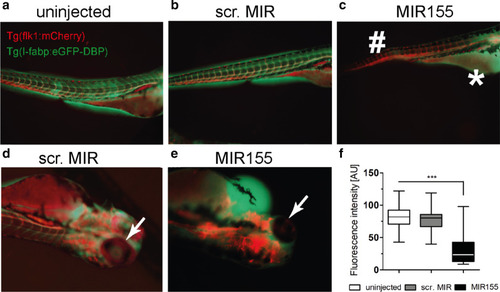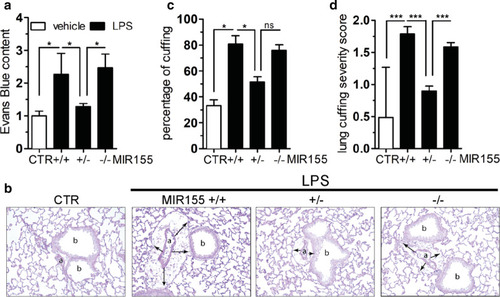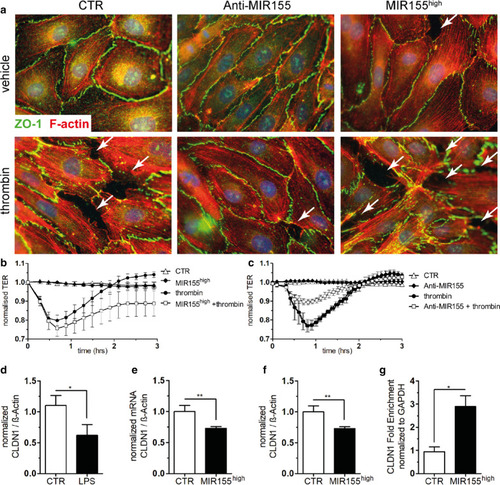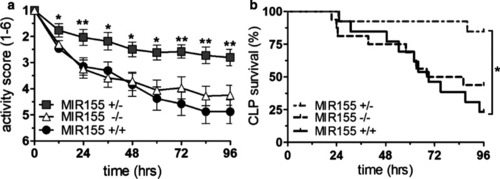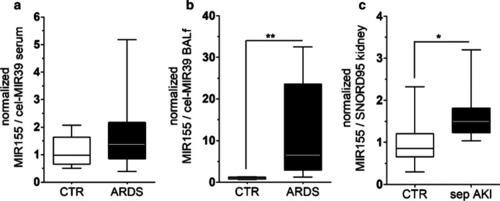- Title
-
Role of endothelial microRNA 155 on capillary leakage in systemic inflammation
- Authors
- Etzrodt, V., Idowu, T.O., Schenk, H., Seeliger, B., Prasse, A., Thamm, K., Pape, T., Müller-Deile, J., van Meurs, M., Thum, T., Garg, A., Geffers, R., Stahl, K., Parikh, S.M., Haller, H., David, S.
- Source
- Full text @ Crit Care
|
Unbiased MIR screening and confirmation in the endothelium of mice with a systemic inflammatory response. Mice were either given LPS (17.5 mg/kg BW i.p.) or vehicle (0.9% NaCl) and killed after 24 h or at indicated time-points. |
|
Functional consequences of MIR155 overexpression and inhibition in zebrafish. |
|
Functional consequences of MIR155 overexpression and inhibition in mice. B6.Cg-Mir155tm1.1Rsky/J knockout mice and wildtype litters were challenged with LPS (17.5 mg/kg BW i.p.) or vehicle (0.9% NaCl) and killed after 16 h. |
|
Functional effects of MIR155 on permeability and target candidates. |
|
Effect of MIR155 depletion on clinical outcomes in murine sepsis. |
|
Translational evidence of MIR155 regulation in human disease. |

